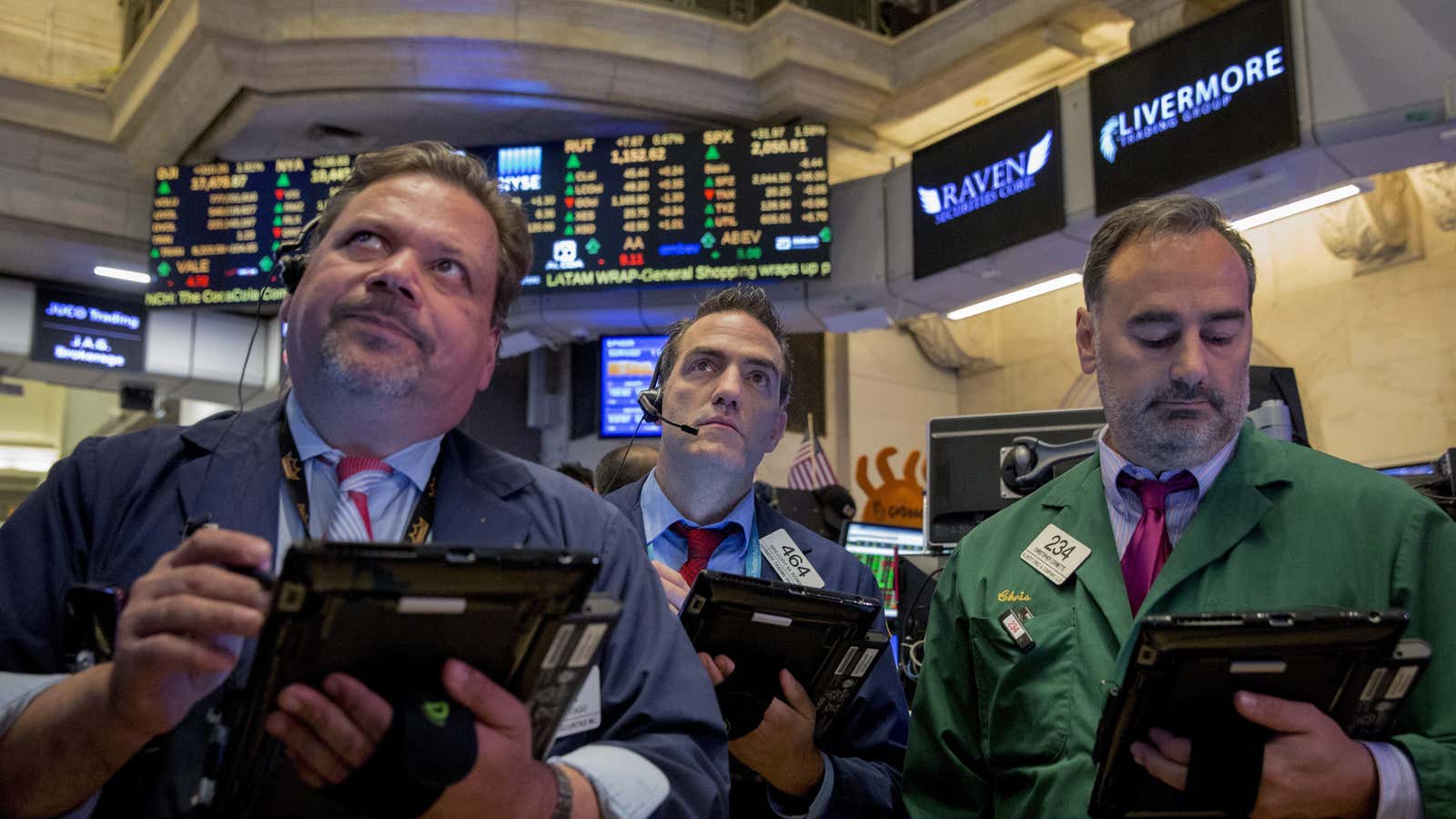If you had $1,000 and knew exactly the right stock to trade every day, how much money could you make in a year? In 2021, trillions.
A trader who began 2021 with $1,000 in a brokerage account and put all of the money in the best-performing S&P 500 company each day of 2021 would have $1.4 trillion in that account today—and hold claim to completing an effectively impossible task.
By March 8, they would have reached $85,163, exceeding the US household median annual income. Buying shares of Equifax on April 22 would have brought total gains to over $1 million. A month later the balance would hit $5 million with a trade in Take-Two Interactive.
The trader would be a billionaire on Aug. 25, after riding Penn National Gaming through a 8.6% one-day gain. They’d reach $10 billion on Oct. 15 and $100 billion on Nov. 15. They would have eclipsed Elon Musk as the richest person in the world after hitting $311 billion on Dec. 2 with a $31 billion gain in Kroger. (Musk was worth a mere $284 billion on that day, according to Bloomberg). Over the course of the year, the trader would not have taken a loss on any single day.
How to trade a perfect 2021
Here’s a day-by-day calendar of the S&P 500 stock they would have had to invest 100% of their portfolio in to pull off the perfect trading year.
Moderna, Tesla, and APA shares were frequent top performers
Although the S&P 500 index has 500 members, only 137 companies were the top performers on any of the 252 trading days in 2021. The most frequent top performers were Moderna, Tesla, and oil driller APA:
Of course, once the account balance had grown past a certain point, it would be impossible to put it into any stock without drastically affecting the stock’s price. In many cases, putting it all into the best-performing company on a given day would have been impossible—there wouldn’t have been enough shares to buy.
Our analysis also did not take into account trading fees, nor changes in the composition of the S&P index through the year. As in prior years, we assumed that all companies allowed for investment in fractional shares.
Moreover, even if one made the impossibly optimistic assumption that picking the best stock of the day is a 50-50 guess, there would be a one in 7.24 quattuorvigintillion (7.24 × 1075) chance of matching these results.
Correction: Because of a data processing error, an earlier version of this item listed Organon as having had the best trading day before it was listed. Instead of Organon’s trading days starting on May 14, we erroneously started them on Dec. 31, 2020. This caused a cascade of erroneous calculations that resulted in the details about when a trader would reach $5 million, $1 billion, $10 billion, and $100 billion to be off by one to three days and list the wrong company that was traded. It also resulted in the final balance ending at $1.32 trillion instead of $1.44 trillion.
